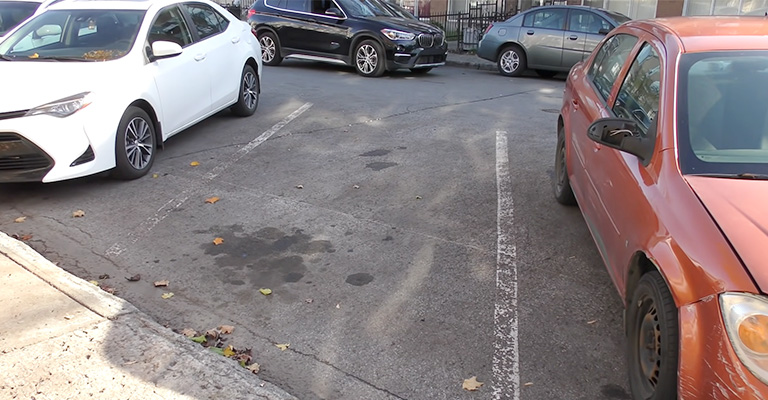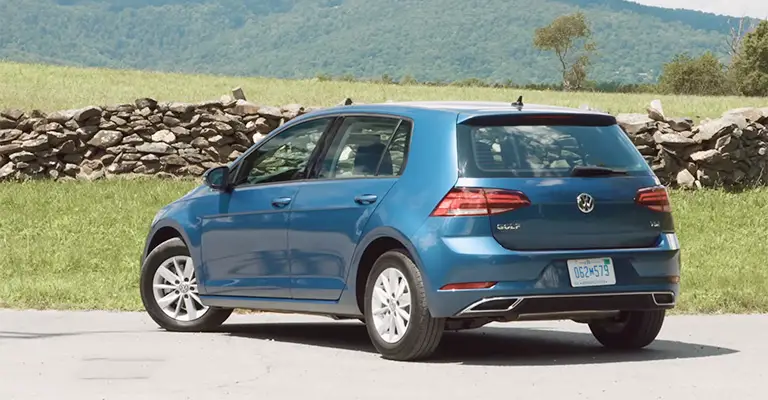Compact parking is defined as parking for smaller or compact cars. This is while maintaining sufficient space for the cars to move about without necessarily moving other cars.
In a world where increasing numbers of people have access to automobiles, parking can be a nightmare. This is true if you are trying to park a larger vehicle or an SUV in a cramped parking space.
According to many experts, separating the parking spaces for vehicles of smaller and larger sizes can be the ultimate solution to this problem.
So, want to dig more into the ins and outs of compact parking? Binge on till the end!

Ways to Identify a Compact Parking Space?
At the entry point of the parking lot or a separate space from standard parking, there should be a sign identifying it as a compact parking space.
However, some attributes will help you separate a compact parking space from the rest −
- Should have a sign that says “Compact Parking Zone“
- Dimension of a stall is within a length of 16 feet (4.88 meters), and a width of 8 feet (2.44 meters)
- Allows only compact cars that can fit into the dimensions
- Besides cars, motorcycles and other smaller vehicles are also parked there
How Big is Compact Car Space?

Knowing the dimensions of compact parking spaces should make compact parking meaning clear to understand.
Note: Though the US and North American cars generally tend to be bigger than in European countries, the dimensions for compact cars are similar in both these continents.
A compact parking stall is around 16 feet (4.88 meters) in length and 8 feet (2.44 meters) in width.
If you have a car less than 4 meters in length, you should be easily able to fit in the parking zone.
Besides compact cars, motorcycles, scooters, and other smaller vehicles can also be parked in compact parking spaces.
What Is a Compact Car?

A compact car is exactly what it sounds like. It is just cars that are smaller than standard vehicles while not sacrificing any of the functionalities. Compact cars are designed to be efficient in space management.
These cars are defined by both their interior space and exterior dimensions. They measure around 100 to 109 cubic feet in interiors (2.83 cubic meters to 3 cubic meters) and 161 to 187 inches (4 meters to 4.8 meters) in length.
The measurements here are not arbitrary; These are the dimensions of a compact car as defined by the EPA (Environmental Protection Agency).
A compact car is smaller than a standard car or an SUV. Smaller doesn’t mean it has to have fewer than four seats or doors!
Many compact cars have around four to five seats and can even support hatchback doors.
Such cars are generally contrasted with mid-sized cars or sedans with an interior volume of 110 to 120 cubic feet.
Difference Between Compact and Standard Parking

In short, standard parking space is where you don’t have to be concerned about the size of your car because there is ample space to park your vehicle.
Standard parking spaces are larger than compact parking spaces. They are designed to accommodate standard-sized vehicles. While compact parking spaces on the other hand are much smaller and can only accommodate small and compact cars.
Here are some of the other differences:
Quantity Over Quality
A crucial shortcoming of standard parking spaces is that it sacrifices quantity for quality. In large crowded places where many people park their cars, the standard measurement seems the wrong choice.
A compact parking space, on the other hand, allows more cars to be parked in a single parking lot. The smaller dimensions of the stalls ensure that as many cars as possible are parked in the spaces.
Law Restrictions
Another significant difference between standard and compact parking is that standard parking spaces allow vehicles of all sizes without any law restricting the dimensions of the cars parked there.
This isn’t the case for compact parking. Here, there are pre-set rules as to what type of vehicles of what sizes can be parked in the zone.
Dimensions
A standard parking space has an average length of 10 to 20 feet (3 to 6 meters) and an average width of 7.5 to 9 feet (2.29 to 2.74 meters).
While a compact parking space has an average length of 16 feet (4.88 meters) and an average width of 8 feet (2.44 meters).
Legal Status of Parking Larger Cars in Compact Parking Spaces
The legality of parking full-sized vehicles in compact parking zones can vary based on your country or state. So, it’s best to check the local law from a reliable source.
In countries where it’s illegal, the traffic law can either give you a ticket or tow your car for parking in the wrong parking zone.
But even if it’s legal, you should avoid parking larger vehicles in compact parking spaces as those spaces are too small to accommodate big cars.
Bottom Line
Compact parking is a system or a way for parking spaces to accommodate a greater number of cars by reducing the space required for a single car. This system of parking sacrifices mobility for quantity.
Generally, vehicles that can fit into the dimensions of a compact parking stall while maintaining basic maneuverability are allowed to park in compact parking spaces.
We hope that this article clarifies compact parking meaning and you can now easily choose your ideal zone to park.
Leave a Reply